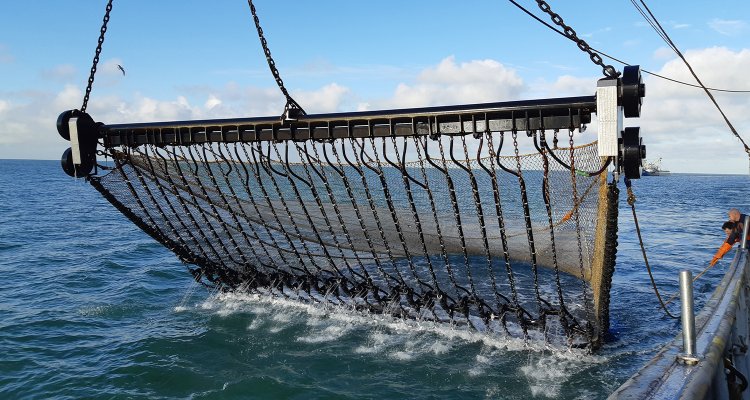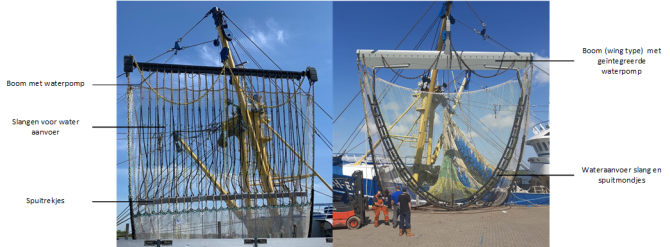
Impact story
Water spray: a new fishing method to catch sole
Scheveningen-based fishing company Jaczon, mechanical engineers and fisheries researchers from Wageningen Marine Research have been conducting encouraging innovation research since 2017 into an alternative fishing gear to give the Dutch sole fishery new prospects for the future. The water spray gear developed uses a technique where flatfish such as sole and plaice get startled from the seabed with water jets, to then swim into the net. The gear results in significantly less fuel consumption than the traditional fishing method, as tickler chains that disturb the seabed are not needed.
How does it work?
The animation below shows the use of the water spray gear for sole fishing.
- Unfortunately, your cookie settings do not allow videos to be displayed. - check your settings
First and second prototype developed
The first step was to test a model of the water spray gear in a water basin. A first prototype water spray gear was developed in 2018. In 2019, this prototype was assembled and tested on a eurocutter. Various set-ups were tested during the exploratory study (2019-2021). These included finding the best water pressure, different spray directions, the most suitable fishing grounds and the optimal fishing speed.
During the 30 test voyages, port and starboard comparisons took place on each haul, comparing the effect on catch of the modification on one side with the unmodified other side.

Catches were also compared with those of cutters in the same area, and cameras attached to the gear recorded what was happening underwater. Researchers from Wageningen Marine Research analysed and reported the results for each test setup. All results were used for further optimisation of the water spray gear.
The first prototype water spray was a mixed success, with potential for catch improvements, among other things. With the knowledge gained during this process, a second version was created; the water spray gear 2.0. This version had a water spray in a V-shape in the gear instead of the previously tested square shape.

Less impact on benthic life and what to do with unwanted bycatch?
This new catch method is likely to have a less mechanical impact on benthic life due to the absence of tickler chains. In the current studies, unwanted bycatch of the water spray gear is similar to that of the beam trawl. A next step in the research could be net innovations to allow unwanted bycatch to escape from the net.
Reduced emissions and fuel costs
By scientifically supporting the water spray gear innovation project, with research on effectiveness and optimisation of the new gear, Wageningen Marine Research contributes to fewer emissions and lower fuel costs in the cutter sector.